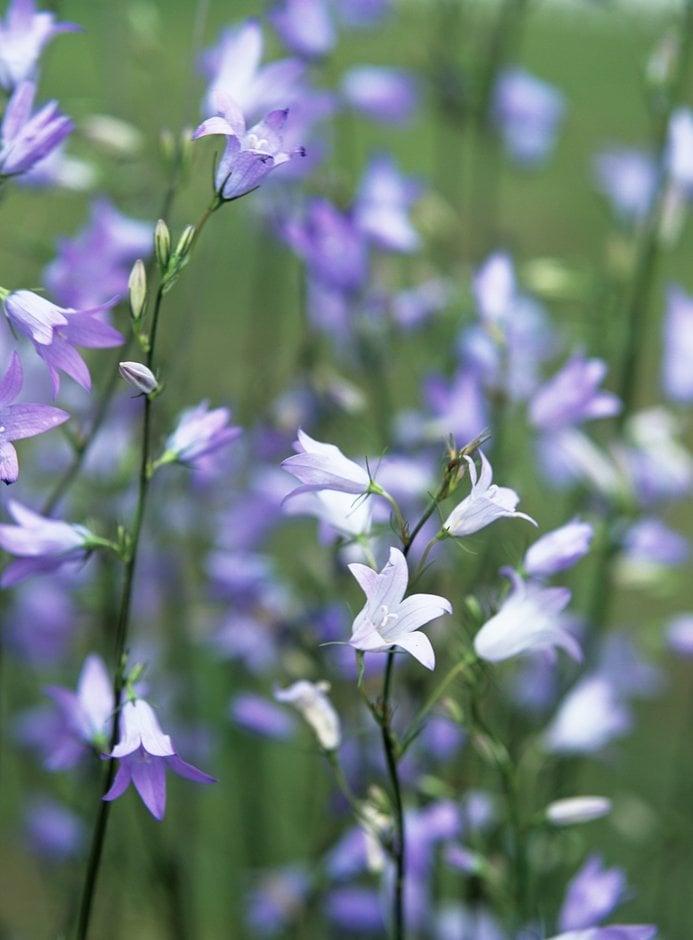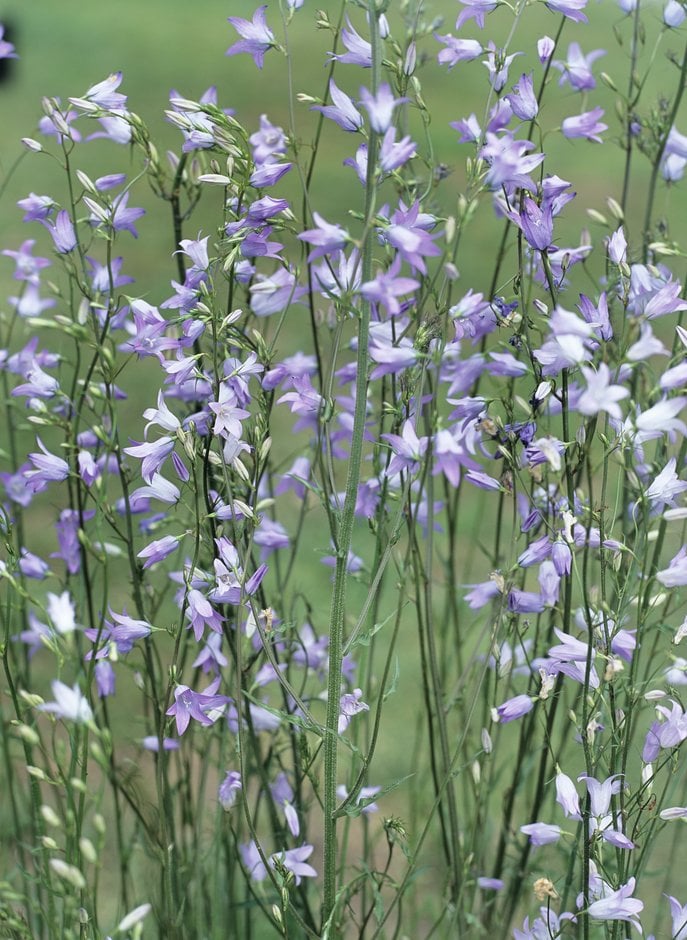Campanula patula
spreading bellflower
An erect, herbaceous perennial or biennial to around 80cm tall forming a basal rosette of rough, obovate leaves. Wiry, branched stems with alternate, narrow leaves bear small clusters of starry, violet-blue flowers with widely-spreading petals
Size
Ultimate height
0.5–1 metresTime to ultimate height
1–2 yearsUltimate spread
0.1–0.5 metresGrowing conditions
Moisture
Moist but well–drained, Well–drainedpH
Acid, Alkaline, NeutralColour & scent
| Stem | Flower | Foliage | Fruit | |
| Spring | Green | |||
|---|---|---|---|---|
| Summer | Blue Purple | Green | ||
| Autumn | Green | |||
| Winter |
Position
- Full sun
- Partial shade
Aspect
South–facing or North–facing or West–facing or East–facing
Exposure
Exposed or Sheltered Hardiness
H5Botanical details
- Family
- Campanulaceae
- Native to GB / Ireland
- Yes
- Foliage
- Deciduous
- Habit
- Bushy
- Genus
Campanula may be annuals, herbaceous or evergreen perennials, with bell or star-shaped, often blue, flowers in late spring or summer
- Name status
Correct
- Plant range
- Europe, W Siberia
How to grow
Cultivation
Grows best in sun or partial shade in a moist, well drained soil
Propagation
Propagate by seed
Suggested planting locations and garden types
- Cottage and informal garden
- Wildlife gardens
- Wildflower meadow
- Banks and slopes
- Flower borders and beds
Pruning
No pruning required
Pests
Diseases
May be infected by a rust
Love gardening
Sign up to receive regular gardening tips, inspiration, offers and more
View our Privacy Policy
Get involved
The Royal Horticultural Society is the UK’s leading gardening charity. We aim to enrich everyone’s life through plants, and make the UK a greener and more beautiful place.

